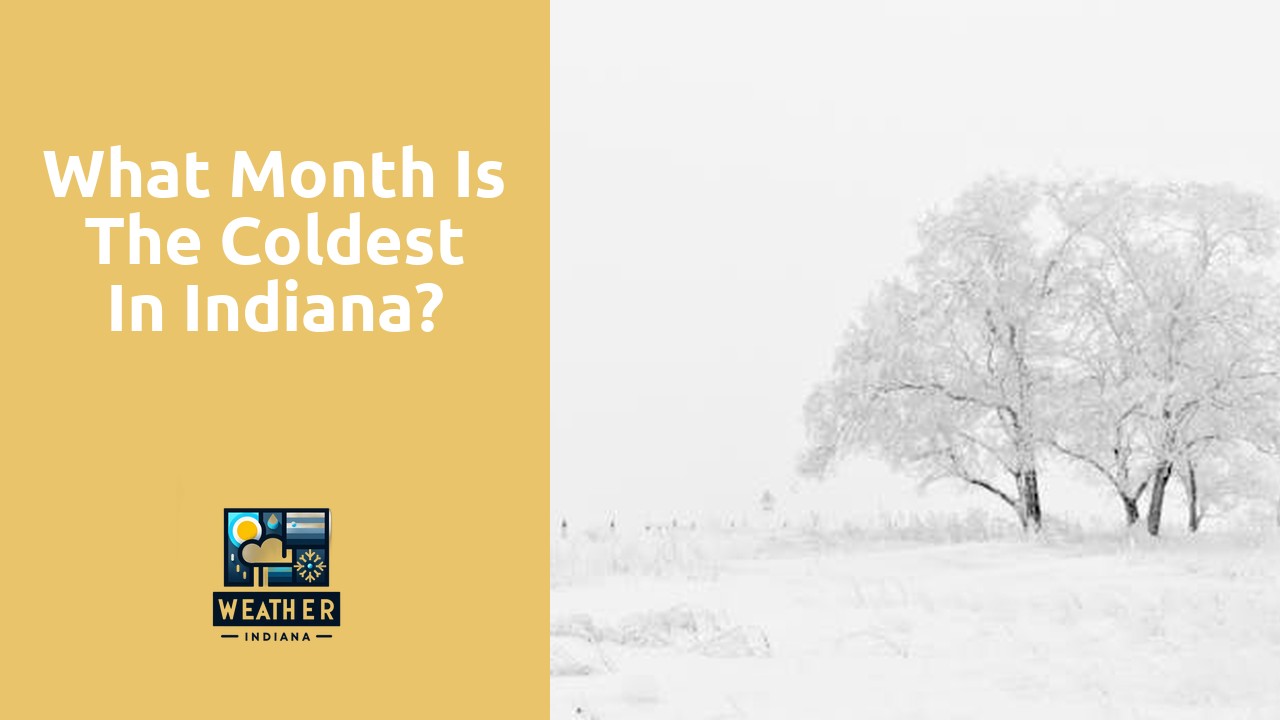Table Of Contents
Patterns of Snowfall in Indiana
Snowfall patterns in Indiana exhibit variability across the state, with northern regions usually experiencing heavier snowfall compared to the south. Counties closer to Lake Michigan tend to receive more snow due to lake-effect snowstorms. These areas can see significant accumulations during the winter months, impacting transportation and daily activities for residents.
In contrast, southern Indiana generally receives lesser snowfall, with milder winters than their northern counterparts. However, occasional winter storms can still bring substantial snowfall to these regions, causing disruptions and challenges for residents who may not be as accustomed to dealing with large amounts of snow. Overall, the diverse snowfall patterns in Indiana create a unique winter experience for residents across the state.
Frequency of Snowstorms in the Coldest Month
Snowstorms are a common occurrence in Indiana during the coldest month of the year. The frequency of these snowstorms varies across the state, with certain regions experiencing more intense and frequent snowfall compared to others. The snowstorms can range from light flurries to heavy snowfall, causing disruptions in daily life and travel.
During the coldest month in Indiana, snowstorms can impact transportation systems, schools, businesses, and overall public safety. The accumulation of snow can lead to slippery roads, reduced visibility, and challenges in clearing the snow promptly. As a result, it is crucial for residents to stay informed about weather forecasts and be prepared for potential snowstorms during this period of the year.
Impact of Climate Change on Indiana’s Winter Temperatures
A significant concern in Indiana is the impact of climate change on winter temperatures. The state has been experiencing noticeable shifts in its winter climate patterns over the years. Winters are becoming milder, causing a reduction in the number of days with extreme cold temperatures. This change not only affects the comfort of residents but also has implications for agriculture and ecosystem dynamics in the region.
Moreover, the impact of climate change on winter temperatures in Indiana has led to alterations in the timing and intensity of snowfall. Warmer winters have resulted in decreased snow cover and shorter snow seasons across the state. These changes have implications for various sectors, including winter sports, transportation, and water resources management. As Indiana continues to grapple with the effects of climate change, understanding these shifts in winter temperatures is crucial for policymakers, businesses, and residents alike.
Trends in Warming Winters and Their Effects
Warming winters in Indiana have become increasingly noticeable in recent years, with temperatures exhibiting a rising trend overall. This shift is a clear reflection of the broader impacts of climate change on the state’s weather patterns. The consequences of these warmer winter temperatures are multifaceted, affecting various aspects of life in Indiana.
One significant effect of warming winters is the alteration of ecosystems and agricultural practices. With milder temperatures, plant and animal species may shift their ranges, impacting biodiversity and potentially disrupting food chains. Additionally, farmers may need to adjust their planting schedules and crop choices to adapt to the changing climate conditions.
Analysis of Temperature Averages in Different Regions of Indiana
In Indiana, temperature averages vary significantly across different regions of the state. Northern Indiana generally experiences colder temperatures compared to central and southern Indiana due to its proximity to the Great Lakes. Cities like South Bend and Fort Wayne often record lower temperature averages during the winter months, contributing to the overall chill in the region. The presence of large bodies of water in the northern part of the state also influences the temperature, leading to cooler winters.
Conversely, central and southern Indiana tend to have slightly milder winter temperatures, with cities like Indianapolis and Evansville experiencing comparatively warmer conditions. This difference in temperature averages can be attributed to the region’s distance from the Great Lakes and the moderating effect of the Ohio River in certain areas. Understanding the variations in temperature averages across different regions of Indiana is crucial for predicting weather patterns and preparing for the winter season.
Variability of Cold Weather Across the State
Across the state of Indiana, the variability of cold weather manifests in diverse ways, influenced by geographical factors and local climates. Northern regions of Indiana often experience colder temperatures compared to the southern parts, leading to variations in the intensity and duration of winter conditions. Cities such as South Bend and Fort Wayne typically encounter more prolonged periods of cold weather and heavier snowfall, while Indianapolis and areas in the south may have milder winters with less snow accumulation.
Moreover, the proximity to bodies of water like Lake Michigan can significantly impact the cold weather patterns in certain areas of Indiana. Lake-effect snow can bring about sudden and intense snowfall in regions close to the lakeshore, creating distinct differences in snow accumulation across the state. This geographical feature contributes to the unpredictability of winter weather, as some areas may face drastic temperature changes and frequent snowstorms while others remain relatively unaffected.
FAQS
When is the coldest month in Indiana?
The coldest month in Indiana is typically January, with temperatures dropping to their lowest levels during this time.
How cold does it get in Indiana during the coldest month?
Temperatures in Indiana during the coldest month can vary, but it is not uncommon for them to dip below freezing, with some areas experiencing subzero temperatures.
What factors contribute to Indiana’s coldest month being in January?
The location of Indiana in the Midwest, along with its proximity to the Great Lakes, plays a significant role in making January the coldest month due to cold air masses and winter weather patterns.
How does the frequency of snowstorms change during the coldest month in Indiana?
The coldest month in Indiana, which is typically January, often sees an increase in the frequency of snowstorms due to the combination of cold temperatures and moisture in the atmosphere.
Are there any trends showing a shift in the coldest month in Indiana due to climate change?
While there is ongoing research on the impact of climate change on Indiana’s winter temperatures, current trends suggest that January continues to be the coldest month in the state despite overall warming trends.

